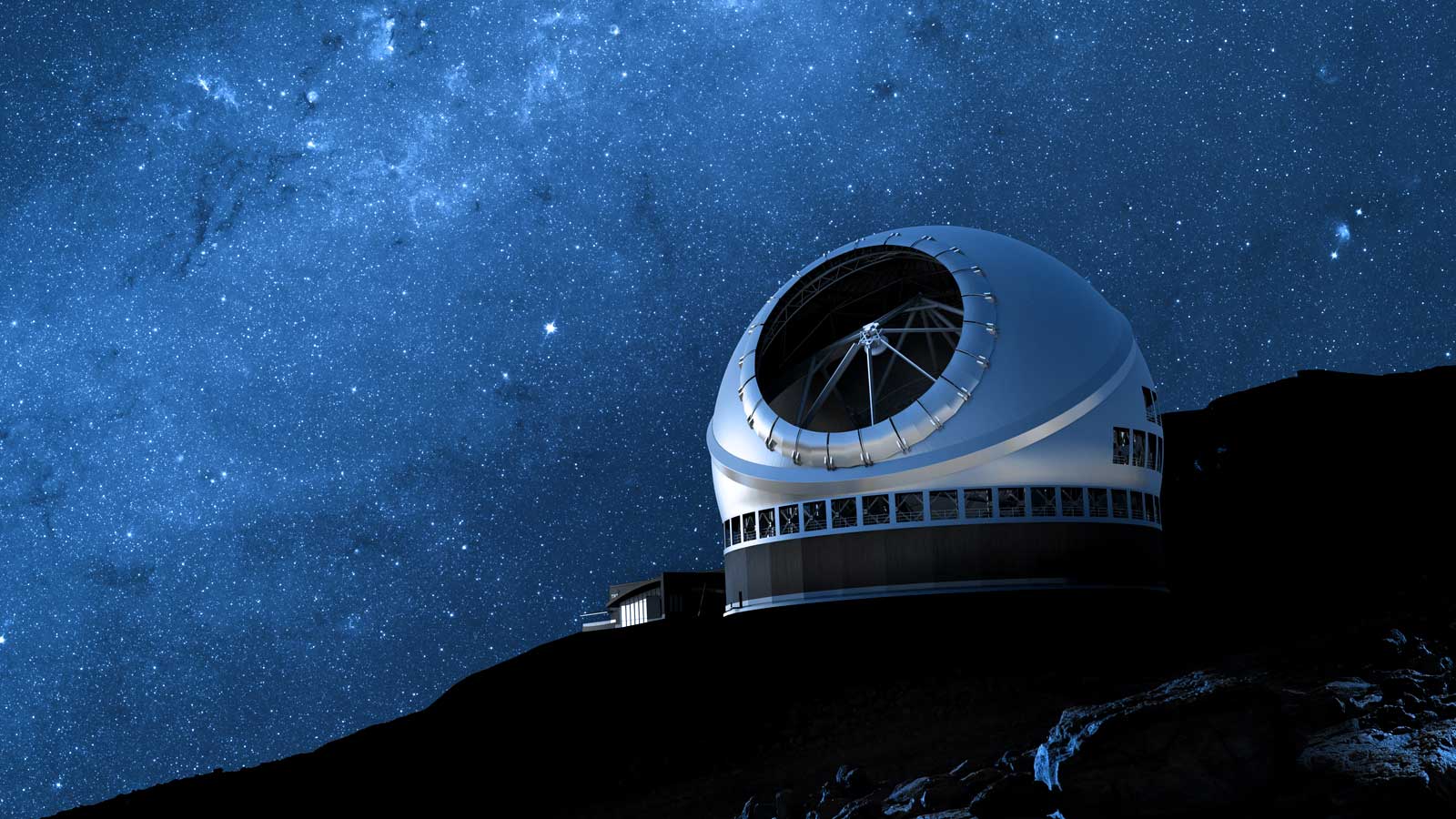
A realistic simulation of looking at TMT inside its dome. You can see the primary mirror, the secondary mirror at the top of the structure and reflected in the lower right of the primary mirror, and the tertiary mirror in the middle of the primary mirror, getting ready to send the light to the instruments.
A realistic simulation of TMT launching its adaptive optics lasers. The lasers help the adaptive optics system know how the atmosphere is distorting the light, allowing TMT to correct this distortion to see images that are more than four times sharper than those form the JWST space telescope over the widest field of view of all the ELTs.
A realistic simulation of TMT's secondary mirror. Note the thin spiders supporting the secondary. Such thin spiders are important for removing petal modes that adversely affect image quality and ensuring more of the mirror gathers light from the distant objects we're studying.
The Thirty Meter Telescope is shown at a very low elevation angle. The segmented primary mirror reflects the convex secondary mirror. The tertiary mirror in the center of the primary mirror is oriented to send light to the Wide Field Optical Spectrograph, the gray structure located on the right side of the image. The left and right instrument platforms are seen and the dark blue adaptive optics enclosure is seen on the upper left on the instrument support structure.
The Thirty Meter Telescope is shown at a very low elevation angle. The segmented primary mirror reflects the convex secondary mirror. The tertiary mirror in the center of the primary mirror is oriented to send light to the Wide Field Optical Spectrograph, the gray structure located on the right side of the image. The left and right instrument platforms are seen and the dark blue adaptive optics enclosure is seen on the upper left on the instrument support structure.
An artist concept of TMT at night, with the laser guide star system illuminated.